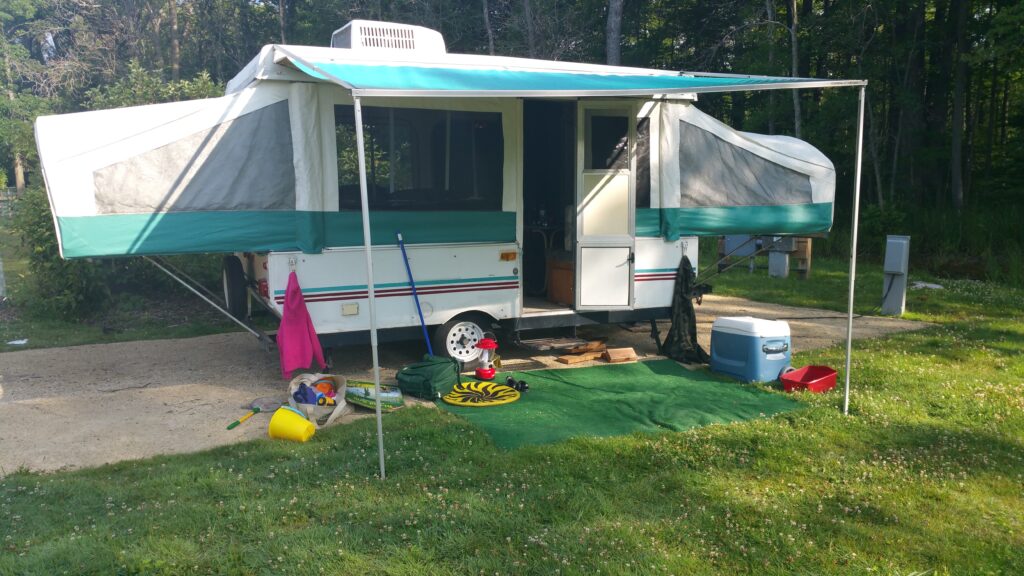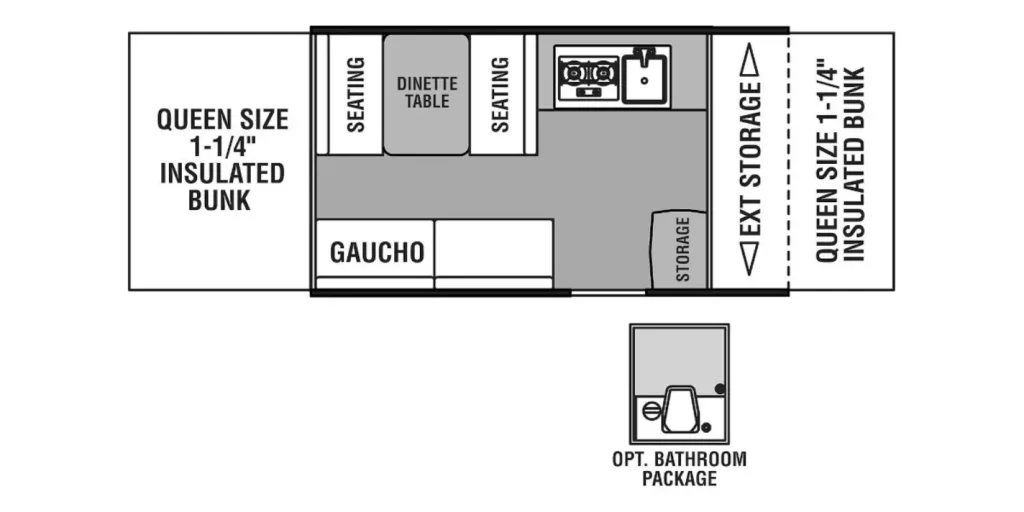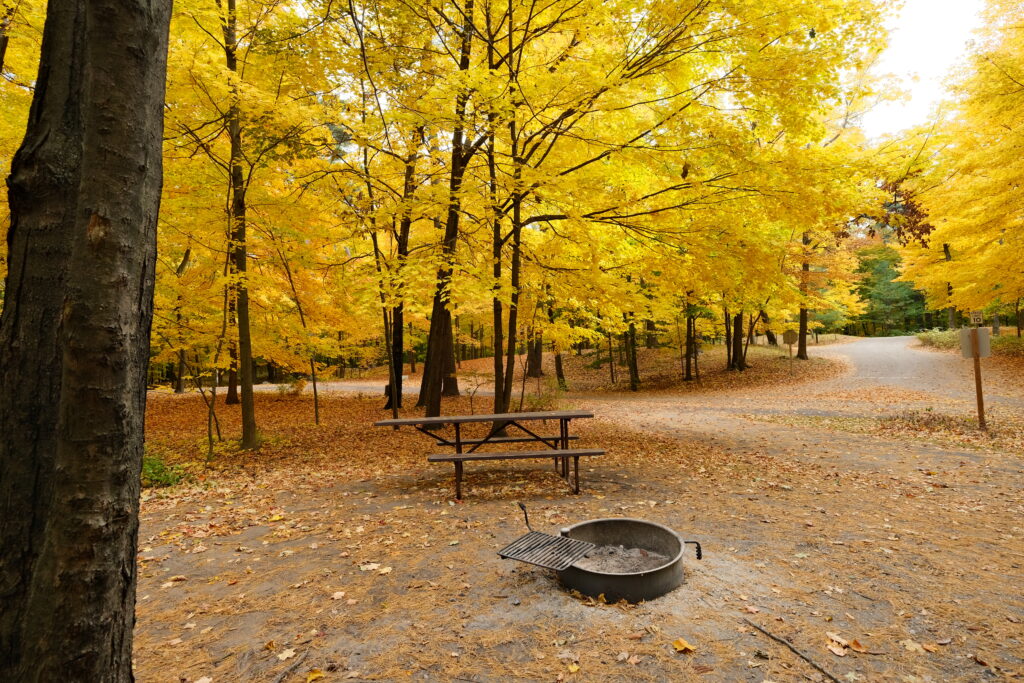
A pop up, or folding camper as they are sometimes called, is a great way to start camping! A pop-up is a great small, light weight tow vehicle friendly entry into camping! The price of most pop-ups will be the lowest entry cost of any camper. If you search any of your favorite peer to peer sale sites, you will be able to find a pop up for a few hundred dollars on up. The majority of the trailers available will be very affordable. Some higher end new pop ups can run close to $30,000. Most new units can be obtained for pricing in the mid to upper teens price points. This type of camper is also very light weight. Most will weigh somewhere between 800lbs and 2500lbs. Given this light weight, most vehicles that have a tow hitch can tow a pop-up. That will allow you to use your current small SUV, mini van, or other smaller vehicle to tow this type of camper. Here is an example of a typical floor plan.

As you can see, there is a bed on either side of the camper. The center of the camper is utilized for a booth for eating and a kitchen for cooking. There is also a bench seat and storage throughout. The booth and bench will fold into beds for additional sleeping. Typically the kitchen will have either a fridge or an ice box. The fridge will run off of the power of the camper where an ice box has an area to place ice to keep items cold. Think ice chest or cooler. In the kitchen will be a propane stove that can be used indoors or in most campers, can be taken outside to cook. The pop-up will have a heater that runs on propane to heat the camper in cooler weather. Some pop-ups will have a fan in the roof for ventilation where others can have an air conditioning unit. They will all have lights on the roof for seeing when dark. Most do not have a bathroom, but some larger ones will. This will lead to needing a way to store the waste and remove it. This will be in the form of a black tank or cassette. The traditional pop-up will have a fresh water tank for sink water. Some units will have a water heater, some will not. Again, some units will have a grey tank to store dirty sink water. Others will only have a drain that exits the camper and falls to the ground. Depending on where you are will signify if you need to collect that water for disposal or just let it drain onto the ground.
Every pop-up will need to be set up after arrival at your campsite. This will require you to level the camper from side to side, front to back. Next place any stabilizers in the down position for stability. I will normally plug in the power at this point. After it is level you will “pop it up”. Meaning you will need to raise the roof and pull out the beds. After that, secure the door in place and also secure the canvas/vinyl siding. Next thing left to do is to set up your campsite. It is that simple.
As is the case, the older the camper you have, the less updated the technology and features will typically be. On an older camper the set up process will typically take many additional steps. This is due to how the camper sets up. Older units will have metal prop rods and require you to properly deploy these before you can fully open the camper. Newer models have a cable system to support the beds and will be very quick and efficient. Most will require you to crank the roof up, whereas there are premium units that will have an electric up option. Push button ease to setting up.
Pop-Ups will have large zipper sections that can be opened to let tons of air in. It will be the most open and drafty of any camper. With its soft sides, it will also be the most in-efficient to heat or cool. That said I have been camping when it is snowing outside in a pop up, and in 95 degree humid heat utilizing a pop up. Just because it is not efficient, doesn’t mean that it cannot be done. Ice fishermen use vinyl pop up fish houses all winter long with great success! A pop up is like a safer tent on wheels. The roof will protect better from a hail storm than tent fabric alone. Being and it is a trailer, it is on wheels. I can tell you from experience that waking up and stepping in ankle deep water exiting the camper after a rain storm is much preferred to waking up in that water, sleeping on the ground. In the traditional tent, all of your gear and clothes will be wet. In the camper, you are good to go.
If you plan on going to remote areas camping, this is a very good option. It is lightweight, and can be set up in most places easily. Due to its small size when in its travel state, it will fit into smaller spaces a full size camper cannot. There are some down sides to this camper option also. There is a higher level of set up than other options. This will require the user to be a fairly able-bodied person. Also given the nature of vinyl or canvas sides, if it is raining when you take it down, you will need to set it up when you get back home to dry it off. Mold will form if you put it away wet and do not dry it off. This will mean, as you are breaking camp, you will be getting wet. If you string enough of these experiences together, it might get you to re-think your camper selection.
